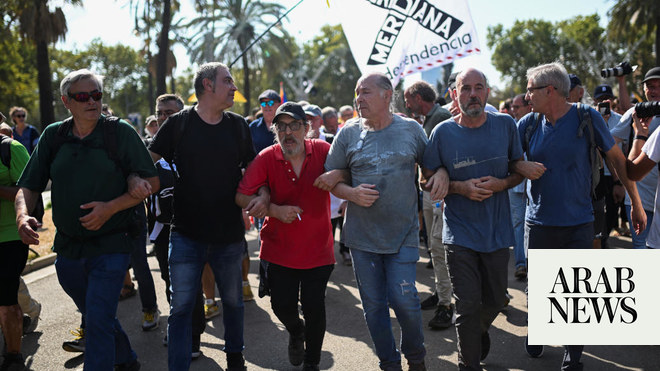Boeing Starliner astronauts could return to SpaceX capsule in February 2025, NASA says
WASHINGTON: NASA officials said Wednesday that the two astronauts carried to the International Space Station in June aboard Boeing’s Starliner could return aboard SpaceX’s Crew Dragon in February 2025 if the Starliner is still deemed unsafe for reentry to Earth.
The US space agency has discussed with SpaceX possible plans to leave two empty seats on the next Crew Dragon launch for NASA astronauts Butch Wilmore and Suni Williams, who became the first crew to fly Boeing's Starliner capsule.
The astronauts’ test mission, initially scheduled to last about eight days on the station, was extended by problems with the Starliner’s propulsion system, which increasingly called into question the spacecraft’s ability to return them safely to Earth as planned.
A Boeing spokesperson said that if NASA decides to change the Starliner mission, the company “will take the necessary steps to configure the Starliner for an uncrewed return.”
Thruster failures during Starliner’s initial approach to the ISS in June and multiple leaks of the helium used to pressurize those thrusters prompted Boeing to launch a testing campaign to understand the cause and propose solutions to NASA, which has the final say. The recent findings have uncovered new information, raising even more concerns about a safe return.
The latest test data has sparked disagreement and debate within NASA about whether to accept the risk of returning Starliner to Earth or use Crew Dragon instead.
Using a SpaceX spacecraft to bring back astronauts Boeing had planned to bring back aboard its Starliner would be a blow to an aerospace giant that has struggled for years to compete with SpaceX and its more experienced Crew Dragon.
Starliner has been docked to the ISS for 63 of its maximum 90 days, and is parked in the same port that Crew Dragon will use to deliver its next crew of astronauts.
Early Tuesday morning, NASA, using a SpaceX rocket and a Northrop Grumman capsule, delivered a routine load of food and supplies to the station, including spare clothes for Wilmore and Williams.
Starliner's high-risk mission is a final test required before NASA can certify the spacecraft for routine astronaut flights to and from the ISS. Crew Dragon received NASA approval for astronaut flights in 2020.
The Starliner’s development has been hampered by management issues and numerous engineering problems. It has cost Boeing $1.6 billion since 2016, including $125 million from the current Starliner test mission, securities filings show.
NASA CONCERNS
A meeting this week of NASA’s Commercial Crew Program, which oversees the Starliner program, ended with some officials disagreeing with the plan to accept Boeing’s test data and use Starliner to fly astronauts home, officials said at a news conference.
“We haven’t conducted any surveys that lead to a conclusion,” said Steve Stich, Commercial Crew Program manager.
“We heard from a lot of people who were concerned, and the decision was not clear,” added Ken Bowersox, NASA’s spacecraft operations manager.
No Boeing executives were present at the press conference on Wednesday.
While no decision has been made on whether to use Starliner or Crew Dragon, NASA has given Boeing more time to conduct more tests and gather more data to build a better case for trusting Starliner. NASA plans to decide next week, officials said.
The agency on Tuesday delayed by more than a month SpaceX’s upcoming Crew Dragon mission, a routine flight called Crew-9, which would have sent three NASA astronauts and a Russian cosmonaut to the ISS.
NASA's ISS program manager said the agency has not yet decided which astronauts it will take on the mission for Wilmore and Williams, if necessary.
Boeing’s tests so far have shown that four of the Starliner’s engines stopped working in June because they overheated and automatically shut down, while other engines that were restarted during testing appeared weaker than normal due to limitations with their propellant.
Ground tests conducted in late July at the White Sands Missile Range in New Mexico helped reveal that overheating of the thrusters causes the Teflon gasket to deform, narrowing the propellant tubes for the thrusters and thus weakening their thrust.
“That, I would say, has increased the level of discomfort and the lack of a full understanding of the physics of what’s going on,” Stich said, describing why NASA now appears more willing to discuss a Crew Dragon possibility after previously downplaying the prospect to reporters.
